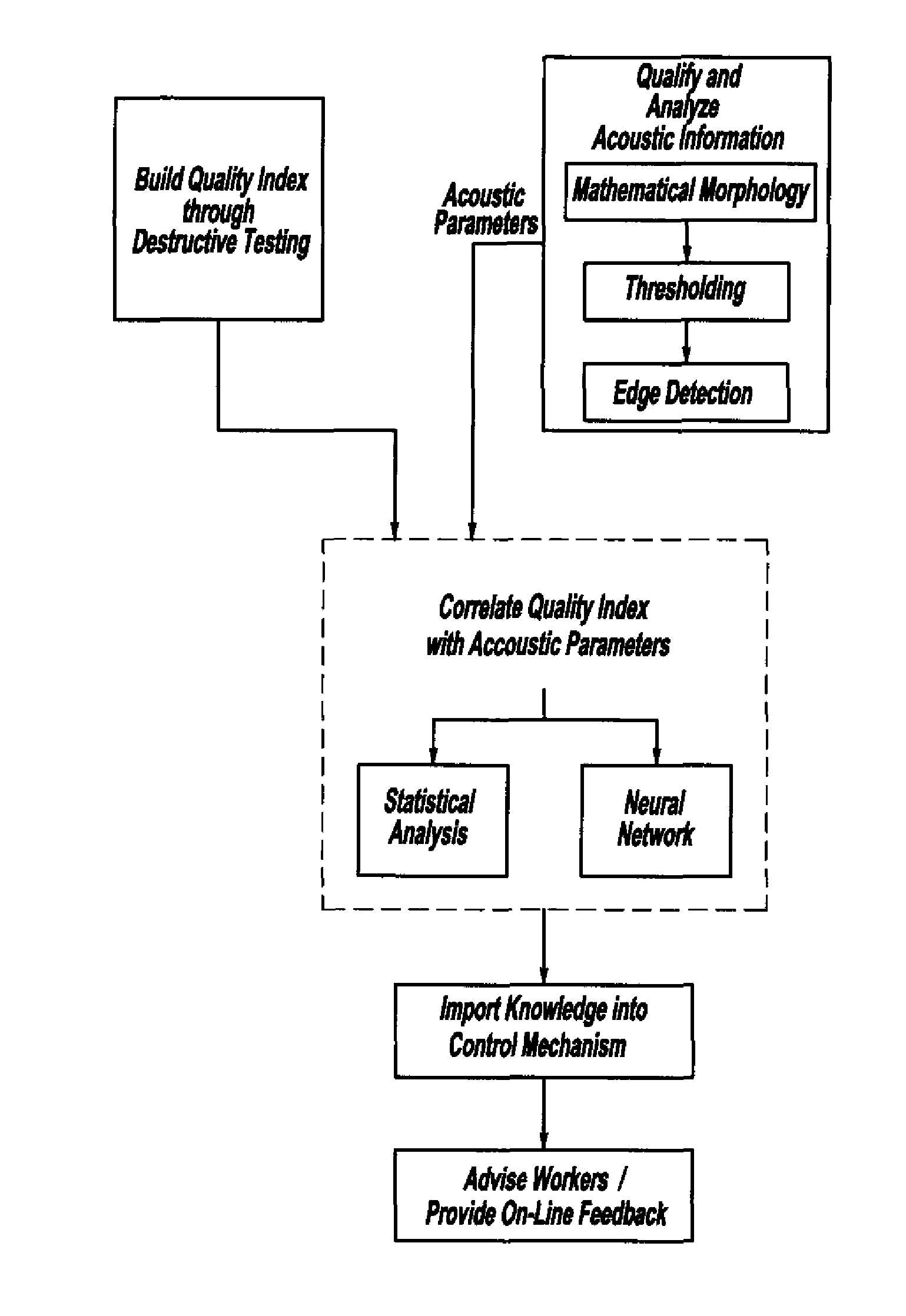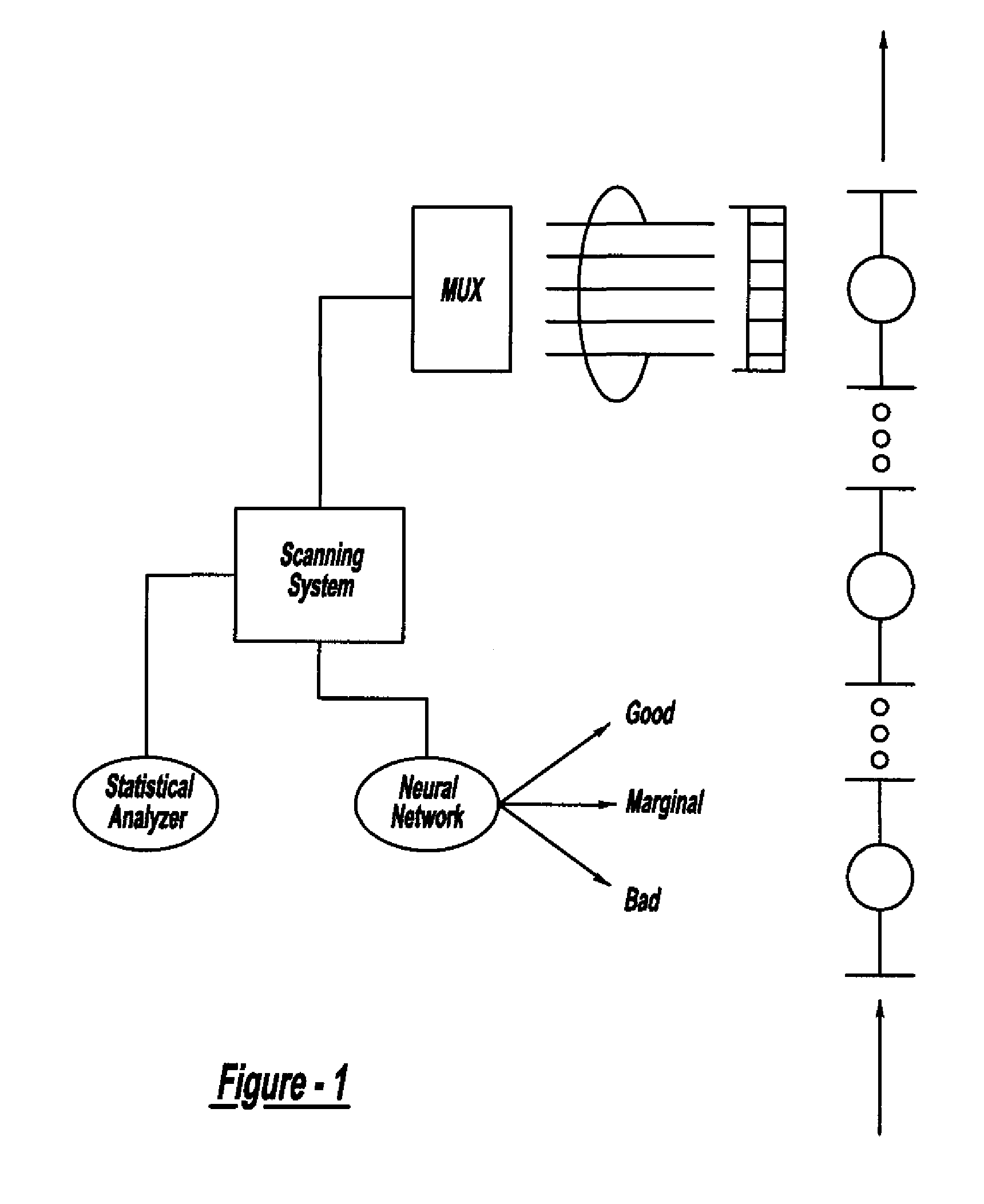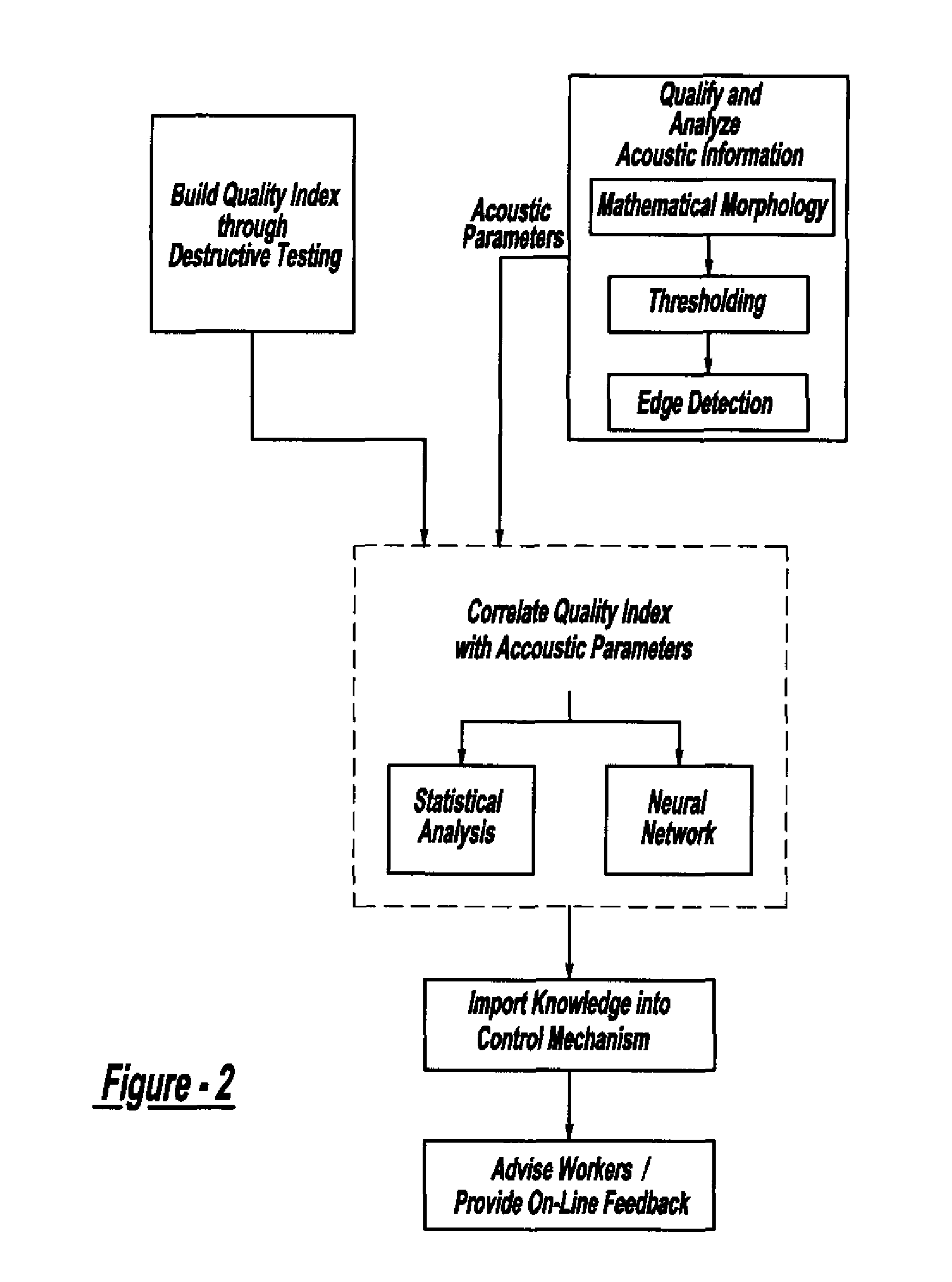Method And System For Assessing Quality Of Spot Welds
a spot weld quality and method technology, applied in the field of method and system for assessing can solve the problems of not solving the overall solution, more difficult to control the quality of spot welds, and quality control of spot welds, so as to facilitate on-line, non-destructive inspection of spot welds
- Summary
- Abstract
- Description
- Claims
- Application Information
AI Technical Summary
Benefits of technology
Problems solved by technology
Method used
Image
Examples
examples
[0099] The above system and methods will now be illustrated with several examples. These examples include examined specimens produced under carefully controlled welding parameters (welding current, electrode pressure, and holding time) and identical metal conditions (e.g., surface coating, thickness). Due to the continuous hardware improvement, weld specimens were separated into three groups chronologically. The first group, with C-scan images as the results, was examined earlier by ultra-Short Pulse Scanning reflection Acoustic Microscope (SPSAM). The quality of these specimens was certified by experts from the best to the worst as setup, nominal, minimum, less than minimum, and stick weld, respectively. The minimum quality is the bottom line of an accepted weld. The second group, with C-scan images as the results, was examined by SPSAM as well. This group was peel tested and served as the verification group to test the Artificial Neural networks (ANN) model built by Group One. The...
PUM
| Property | Measurement | Unit |
|---|---|---|
| frequencies | aaaaa | aaaaa |
| ultrasound image | aaaaa | aaaaa |
| weight | aaaaa | aaaaa |
Abstract
Description
Claims
Application Information
 Login to View More
Login to View More - R&D
- Intellectual Property
- Life Sciences
- Materials
- Tech Scout
- Unparalleled Data Quality
- Higher Quality Content
- 60% Fewer Hallucinations
Browse by: Latest US Patents, China's latest patents, Technical Efficacy Thesaurus, Application Domain, Technology Topic, Popular Technical Reports.
© 2025 PatSnap. All rights reserved.Legal|Privacy policy|Modern Slavery Act Transparency Statement|Sitemap|About US| Contact US: help@patsnap.com



